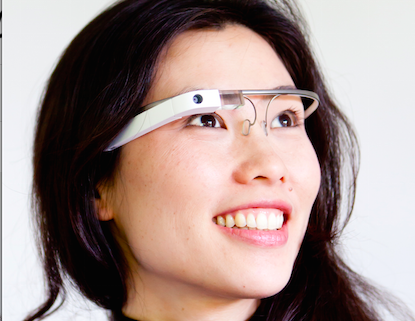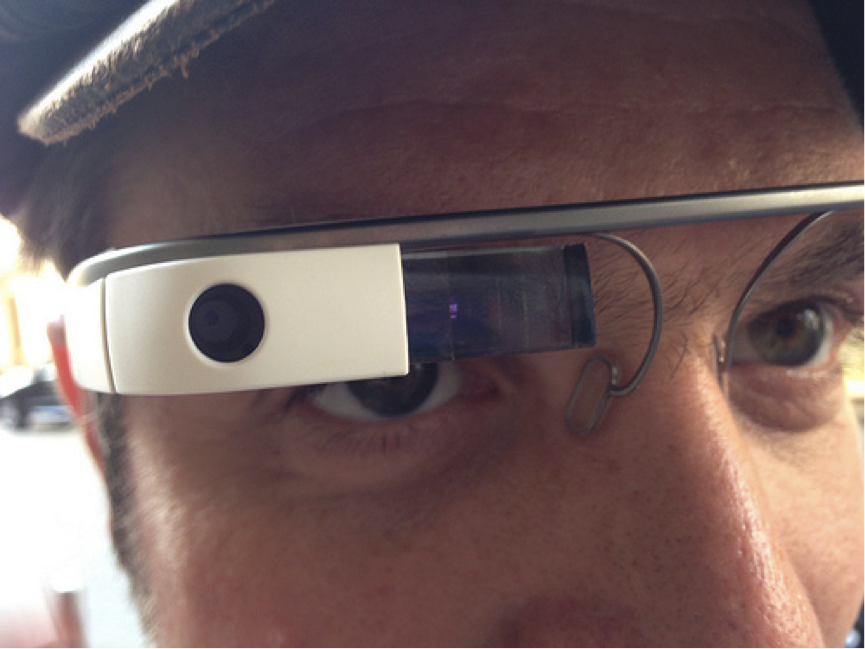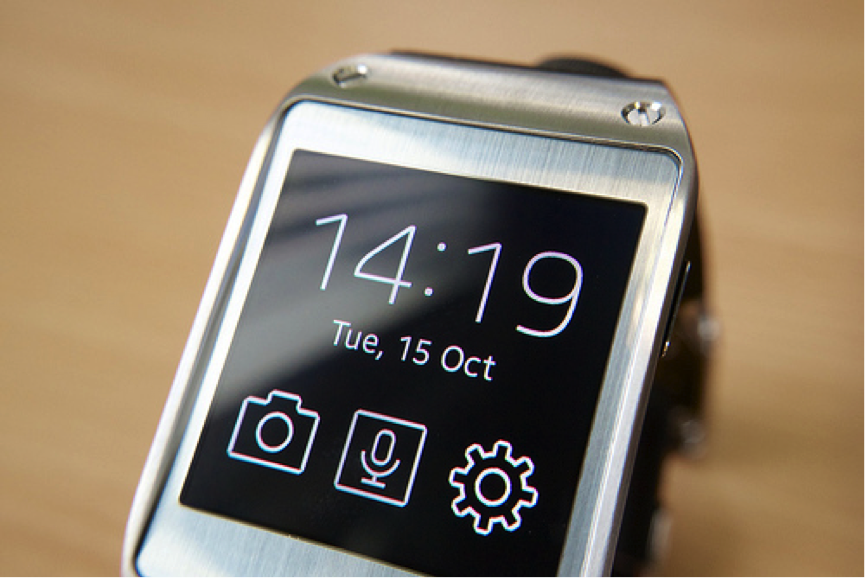Although wearable technology has been around in one form or another for quite some time, it has gained a lot of attention in recent years, with more and more manufacturers recognising its potential.
Not only does this latest fad open up the possibilities of new product categories and new types of consumer, it also provides potential for valuable revenue streams in a highly competitive technology market.
From the headline-grabbing and somewhat controversial Google Glass, to more humble and modest Kickstarter projects such as the Pebble smartwatch, wearable technology looks like a trend that won’t be disappearing anytime soon.
In fact, according to analysts at leading global financial services company Credit Suisse, wearable technology will be “the next big thing,” and is forecasting the market to jump from around $3-5bn today to $50bn over the next three to five years.
So what products are currently available? What are the latest developments? And what does the future have in store?
Google Glass
Just in case you’ve somehow missed the hype surrounding the biggest news in wearable technology for the past 12 months, here is a quick recap.
Google Glass is a type of wearable computer that features an optical head-mount display (OHMD). The device displays smartphone-like information in front of the user’s eyes and is controlled via natural voice commands, as it is Google’s mission to create a mass-market ubiquitous computer.
As opposed to inputting information physically, a Google Glass user can connect to the internet, take pictures, record videos, access online content, receive directions and translate dialogue through speech alone.
At this year’s Google I/O, the search engine’s annual developer conference, Glass generated a huge amount of attention from the event attendees. With official Facebook, Twitter and Tumblr apps making their debut, numerous developers were expressing their interest in the device.
However, Google seems to have taken a backseat in the promotion and development of Glass. Now that willing participants to Google’s Explorer program are testing the device, the tech giant seems happy for Glass to evolve naturally.
In some ways, this is a risky strategy, as concerns over privacy and social applications still exist. What’s more, Google Glass seems to have numerous critics, with wearers sure to be the subject of ridicule. Only time will tell whether Google’s organic approach to mass-market acceptance will work.
Samsung Galaxy Gear Smartwatch
Another piece of wearable technology that has been making headlines is the Samsung Galaxy Gear Smartwatch, however the company perhaps isn’t making the headlines it hoped for. The Smartwatch was launched on 4th September 2013, with the company claiming it to be the first of its kind, despite previous releases from Sony and Moto. The Smartwatch connects to Android smartphones via Bluetooth and can be used to answer calls, view messages, control the phone’s media playback and receive notifications.
Despite its anticipated launch, leaked documents have shown that the Smartwatch currently has a high return rate of thirty per cent in Best Buy locations in the United States. The company is now in a state of panic, wondering why their Smartwatch is failing to impress.
What do we think? Well maybe it is that the device is simply failing to live up to its cost of two hundred and ninety nine pounds. The fact it is only compatible with certain Samsung smartphones (Galaxy Note 3 and Galaxy Note 10.1 2014 edition) also makes it quite a limited piece of technology, however Samsung have announced that it will soon work with the Galaxy S4, S3 and Note 2.
One final issue worth mentioning relates to its email capabilities. Although you can use the Smartwatch to view your emails, it is not currently compatible with the Gmail app, which is one of the most widely used email applications by Android users. With these issues, it looks like Samsung may have released their piece of wearable technology just a little too early, probably in an attempt to get ahead of leading competitor, Apple.
Apple iWatch
Although there has been no official word from the company, it is clear that Apple is taking wearable technology very seriously. Since the passing of Steve Jobs, the company has been under pressure to release new and innovative products, which has been somewhat lacking under new CEO Tim Cook.
However, at the AllThingsD conference earlier this year, Cook said that wearable technology was “profoundly interesting” and was “ripe for us to get excited about.” So much so that speculation over the Cupertino-based firm’s iWatch project has gained significant traction in recent months.
If rumours are to be believed, the connected smart wristwatch, which will notify wearers of messages, calls, events and reminders, is currently being developed.
Along with registering the iWatch trademark in Japan, Mexico, Russian, Taiwan and Turkey, Apple has also been aggressively hiring staff to work on the project according to sources familiar with the matter. Despite having a pool of talented technical experts, engineering and development problems have apparently been a big issue.
In another recruitment drive for potential wearable technology, Apple recently hired Paul Deneve, the outgoing chief executive of Yves Saint Laurent to reportedly work on “special projects,” which could include the iWatch.
Last month it was also confirmed that Chief Executive of Burberry, Angela Ahrendts would also be joining Apple as the senior vice president for retail and online stores. She will report directly to Apple’s chief executive, Tim Cook. The hiring of two fashion-focused professionals suggests that Apple is not only looking to develop a technologically advanced piece of equipment, but a fashion-driven product too.
Optimistic Apple fanatics were hopeful of a wearable tech indication at this year’s WWDC (worldwide developers conference), but attention focused on iOS 7, OS X Mavericks and the new Mac Pro.
Other wearable tech products
Having been financed via crowd-funding platform Kickstarter, the Pebble E-Paper Watch is a wearable tech solution that already exists for iOS and Android smartphone users.
Featuring a low power LCD screen, vibrating motor and a three-axis accelerometer, the Pebble can display standard notifications as well as lifestyle apps including weather forecasts and running trackers. The unique and innovative USB-cable charges the device magnetically, so as not to compromise water resistance.
Another notable product currently on the market is Nike+ FuelBand, a health and fitness-inspired digital bracelet that connects to a user’s iPhone.
The band’s accelerometer has the ability to track daily movements and exercise routines, with progress displayed on the FuelBand’s red, yellow and green LED display. Further information can be viewed on the paired iOS device and users can share their achievements on Facebook or Twitter.
Although there is a high interest in wearable technology, many believe that the prices of it need to come down before it can find a mainstream audience. For now customers may look for cheaper models such as ‘Vybe’ a digital bracelet which is currently being financed by crowdfunding.
The bracelet is currently priced at thirty nine dollars, making it far cheaper than many of the alternative pieces of wearable technology, launched by other brands. Of course its features are for more limited, yet still useful.
The Vybe bracelet is compatible with the iPhone 4s and up. It lets wearers know when they have received a message or phone call without them having to take their handset out of their bag or pocket. Vybe vibrates once for a message and in one second intervals when a phone is ringing. Wearers can reject calls directly from their bracelet and can also use it to find their phone as it vibrates constantly if they are more than fifty feet away from their handset. Unlike some of the other pieces of wearable technology, the Vybe bracelet will be available in a variety of colours (providing it gets to the shipping stage) including green, blue, yellow, pink, red, black and white.
Conclusion
With so many new launches, it feels like every technological manufacturer on the planet is in the process of creating their own version of wearable technology. That coupled with the fact that analysts are predicting future success and consumers are eagerly anticipating new arrivals, suggests that wearable technology is most definitely here to stay.




